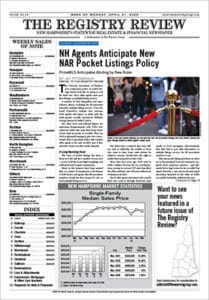Community bankers, particularly in the Northeast, continue to have dim expectations for bank profitability, according to the Conference of State Bank Supervisors’ latest community bank survey.
The first quarter overall Community Bank Sentiment Index fell to 83 from 85 in the fourth quarter, according to the CSBS, the national organization of bank regulators for U.S. states and territories. The first quarter index was the lowest overall rating since the survey began in 2019.
The CBSI captures what community bankers nationwide think about the future of seven areas: business conditions, monetary policy, regulatory burden, capital expenditures, operations expansion, profitability and franchise value.
The CSBS analyzes answers and compiles them into a single number: an index reading of 100 indicates a neutral sentiment, above 100 indicates a positive sentiment, and below 100 indicates a negative sentiment. The index has reflected an overall negative sentiment since the first quarter of 2022, when the rating was 97.
Banks in the CSBS’s Northeast had the lowest overall index of five geographical districts with a rating of 57, down from 71 in the fourth quarter. The West district had the highest rating at 92.
Nationwide, community bankers’ outlook for profitability saw the steepest decline among the assessment areas and remained in the negative range for the second straight quarter, going from 99 in the fourth quarter to 82 in the first quarter. The profitability rating had moved into the positive range during the second and third quarters last year.
For banks in the Northeast region, the profitability index fell from 83 in the fourth quarter to 0. All Northeast bankers surveyed in the first quarter said profitability would be worse in the future. Nationwide, 50 percent of bankers said profitability would be worse, while 31 percent said it would be better and 18 percent expected profitability to remain the same.
Three other CBSI components – future business conditions, monetary policy and regulatory burden – remained deeply negative during the first quarter, though two of them showed improvement.
The rating for future business conditions increased nationwide from 37 in the fourth quarter to 51 in the first quarter, while monetary policy went from 33 in the fourth quarter to 39 in the first quarter.
After increasing slightly in the fourth quarter, the regulatory burden rating declined again, from 26 in the fourth quarter to 22 in the first quarter. It remained the lowest rated assessment area.
“The fragile health of the economy coupled with multiple interest rate increases have been a drag on the CBSI for the past year,” CSBS Chief Economist Tom Siems said in a statement. “Interestingly, government regulation is creeping up as the top concern,”
Northeast bankers had different takes in the first quarter on these three components. While 60 percent of Northeast bankers said business conditions would be worse in the future, the index rating improved to 40 in the first quarter after reaching 8 in the fourth quarter. On monetary policy, however, Northeast bankers were united in pessimism, with all respondents saying monetary policy would be worse in the future.
Their views on regulatory burden also diverged from the national group, where 78 percent of nationwide respondents said regulatory burden would be worse in the future. Among Northeast bankers, 40 percent said it would be worse and another 40 percent said it would remain the same. These results led to the Northeast regulatory burden rating increasing from 25 in the fourth quarter to 60 in the first quarter.
The CBSI did have some areas in the positive range. Capital expenditure had the highest rating at 133, down four points from the fourth quarter. Bankers also had positive sentiments around operations expansion and franchise value, rating 131 and 122, respectively, though both ratings fell slightly from the fourth quarter.

